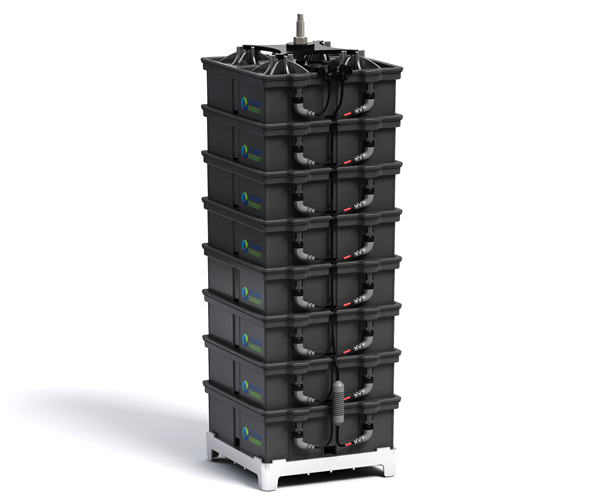Salt Water Batteries and Solar Battery Storage

An Aquion S30 battery stack
(Image courtesy of Aquion Energy)
Salt water batteries? It sounds kind of crazy, doesn’t it? But Aquion Energy, a US-based manufacturer, created a special kind of battery technology that they called ‘Aqueous Hybrid Ion (AHI™)’. Well, they did for a while anyway.
They’re inherently safe due to their chemistry, and they boast a 100% depth-of-discharge capability, with a life cycle of around 3,000 cycles.
This isn’t as much as lithium-ion batteries can boast – around 5,000-6,000 cycles with an 80% depth-of-discharge – but the technology behind Aquion batteries gives them a number of advantages over their lithium-ion counterparts.
For one, they’re non-flammable and non-explosive, require no maintenance, and are built entirely from non-toxic materials. In fact, they are the only batteries in the world to achieve ‘Cradle to Cradle'(tm) certification.
Aquion’s S30 batteries were optimized for long-duration daily cycling, which means 4 to 20+ hour charge and discharge cycles, which is ideal for solar. They were supposedly abuse tolerant and did not degrade from partial state of charge cycling, which is typical of solar applications.
They could also have individual modules replaced/expanded without any detriment to the rest of the battery setup. It is much harder to scale lithium-ion battery banks compared to the Aquion banks.
The main drawbacks were the slightly lower life cycle compared to lithium-ion and a 5-year warranty (as opposed to Tesla’s 10-year warranty for the Powerwall). They also have a low power output per stack – about 0.68kW of steady power – which means that you need to buy at least 5 stacks (0.68kW x 5 = 3.4 kW steady power) to get enough power output to power an average Aussie home.
Aquion batteries were also suitable for both hybrid and off-grid solar setups.
How much did an Aquion battery + solar setup cost?
The Aquion Aspen 48S, a 2.5 kWh battery stack, cost roughly $2,200. A 5kW solar system (the minimum size we recommend for a battery + solar setup) cost around $9,000 at the time the batteries became available. The price of solar has of course dropped a lot since then.
So, 10kWh of Aquion storage (a good amount for the average Aussie home) with a 5kW solar system would have set you back roughly around $17,000 at the time. Note that you would probably want to add at least 15kWh worth of storage to be able to get enough power out of the system for your home (as mentioned above).
Combining that price with its modular scaleability, the Aquion battery represented a cost-competitive battery storage option compared to lithium-ion. However, it was a new technology – with the risks that entails.
Speaking of risks, on March 8, 2017, Aquion filed a voluntary petition under Chapter 11 of the United States Bankruptcy Code.
UPDATE JULY 2017 : Aquion Energy is resuming operations.
UPDATE JULY 2018. According to Canberray’s Battery Test Centre (page 6 of the report): “Although Aquion was bought out in July 2017, it is not supporting existing products in any way, and all existing warranties are void.”
So, that then ended the prospect of salt-water batteries for home energy storage, for now anyway.
